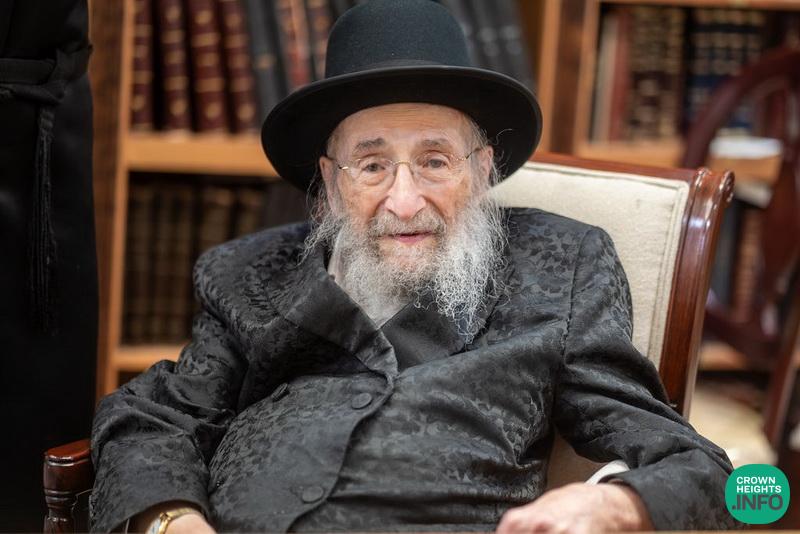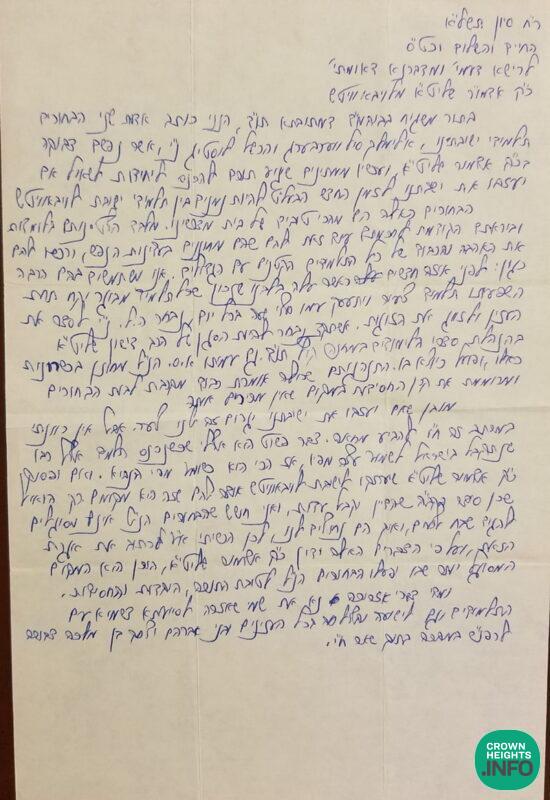
Harav Moshe Wolfson OBM’s Life Of Chasidus
Excerpt from Torah Vodaas and Lubavitch by Rabbi Chaim Dalfin
Rabbi Wolfson, who was born in 1925, learned much about Chasidus by observing Rabbi Mendlowitz, his teacher. In the 1940s, there were few Chasidic Rebbes in the greater New York area, and one who desired to be Chasidic needed to exert much effort. Having Rabbi Mendlowitz as one’s guide in Chasidism was a great benefit. One example of Chasidic discipline he received from Rabbi Mendlowitz was the acceptance of all Chasidic disciplines from Satmar to Lubavitch, Satmar being more emotional and Chabad being more intellectual.
In addition to Rabbi Wolfson’s closeness to Rabbi Mendlowitz, he was close to the Modzitzer Rebbe in Williamsburg and attended many of his celebrations. The Modzitzer was known for his beautiful voice and singing of Chasidic tunes. This drew Rabbi Wolfson to him. Additionally, he visited the Stoliner Rebbe, Skverer Rebbe, and others. From the 1950s onward, he became close to the Lubavitcher and Satmar Rebbes, as well. Rabbi Wolfson is proud to say he is a chasid of three Rebbes, the Lubavitcher, the Satmar, and the Skverer. Hence, his style in sharing and teaching Chasidus became a synthesis of all of these Rebbes combined.
By the 1990s, Rabbi Wolfson’s Torah Vodaas Tanya shiur was so popular that the beis medrash would empty to attend the shiur, so much so that the roshei yeshiva asked him to give it not during the Talmud study periods; rather, at a time that would not interfere with Talmud study, and he abided by their request.
Reb Yaakov Mayteles, who, in 1976, attended Camp Torah Vodaas, in the Catskills, related that Rabbi Wolfson was the camp rabbi. He would conduct a “tish,” literally, a table, i.e., a gathering everyone around a table to celebrate, on Shabbos and sometimes on a weekday on a special yahrzeit of a known holy person. The nigunim that were sung were really beautiful and very special, and he spoke beautiful words of Torah.
There was a separate shul in camp for mesivta and beis medrash students that was separate from the camp shul, which catered to young boys as well. Rabbi Wolfson was the rabbi for both groups, for the whole camp. The level of learning and diligence there was very high and it had a very “Chasidic flavor,” especially on Shabbos. There was intense dancing during shalosh seudos. The lights went out at a certain point, and then the singing and the tenuos, movements, were very intense, with some people becoming truly ecstatic, just like Polish and Hungarian Chasidim. In addition to Mayteles, a few other now card-carrying Lubavitchers, such as Mendy Dubinsky, Zalman Dubinsky, and Pinchas “Pini” Silberberg, also attended.

Mayteles related that Rabbi Wolfson never said anything, pro or con, about the Rebbe’s mitzvah campaigns—mivtzoim—all the while he and three Lubavitcher bochurim were leaving camp almost every day to nearby college campuses in New Paltz and Poughkeepsie, and nobody seemed to mind.
Rabbi Wolfson has been the long-time spiritual leader of Congregation Emunas Yisroel, at 4316 16th Avenue, in Boro Park. His shul is known for its welcoming atmosphere, learning, and exploration of all parts of Torah, and long prayers: a normal weekday morning service can last up to one and a half hours, and a standard Shabbos morning service can take more than three hours. It attracts a sizable clientele who appreciate that mode of avodas Hashem and Rabbi Wolfson’s leadership. He is the author of Wellsprings of Faith: Perspectives on the Sources of Emunah (Feldheim Publishers 2002).
Torah Vodaas and Lubavitch can be purchased HERE!












